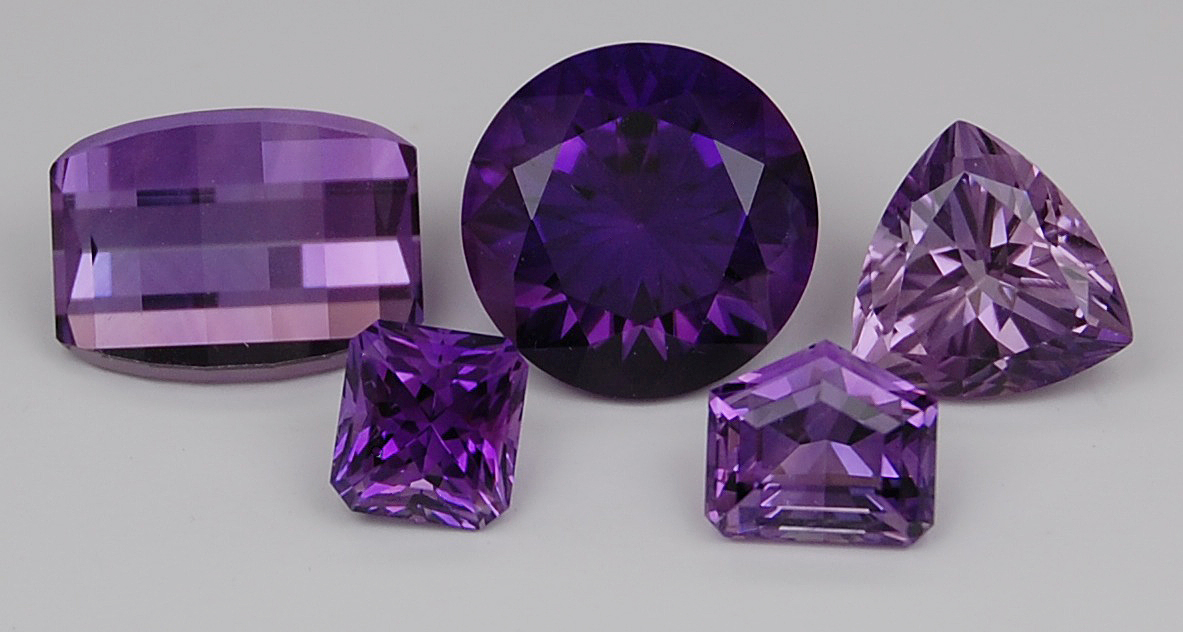
Introduction: Amethyst is a variety of quartz. Pictured in the photo from left to right: back row: 7.10 ct saddle cut from Bolivia, 8.47 ct round briliant from Guerrero, Mexico, 3.80 ct trillion from Deer Hill, Maine; front row: 1.97 ct radiant from Simeone Quarry, Wrentham, Massachusetts and 2.50 ct shield from the Saltman Prospect, Sweden, Maine.
Colors: bluish-purple to purple to reddish-purple. It can range in tone from very light through very dark, sometimes with an undesirable brownish overtone that may be removed by heating.
Clarity: Amethyst is of Type II clarity. Gems in this type typically grow with some minor inclusions in nature that may be eye visible but usually are well hidden or require magnification. Color zoning and twinning are common. Two phase and three phase inclusions are often seen as well as inclusions of rutile and hematite.
Stone Sizes: Amethyst is rare in large transparent masses. An exceptional 1362 ct amethyst from Brazil resides at the Smithsonian. Typical sizes seen within the trade range up to 25 carats.
Localities: Amethyst is known from many worldwide localities. Some of the better known sources are:
-Russia: the “classic” source of amethyst. The best of “Siberian” amethyst exhibit a deep reddish-purple color.
-Brazil, Bolivia, Uruguay, Zambia: large volumes of amethyst have been available from these countries during the 20th century.
-United States: although not competing on a world stage by volume of product, amethyst in the United States can certainly compete for being among the finest in quality with finds in Arizona, Georgia and Maine.
Treatments:
-Heating (H) is done to lighten very dark colored material or to remove any brown secondary color. On occasion, some amethyst can be heated to change the color to yellow.
Gemology:
-Refractive Index: 1.544-1.553
-Birefringence: 0.009
-Optic Character: Doubly refractive, uniaxial positive
-Dispersion: 0.013
-Specific Gravity: 2.66 (+0.03,-0.02)
-Hardness: 7
-Toughness: good
-Chemical Composition: SiO2
--Cause of Color: Color centers involving iron impurities and natural irradiation
-Absorption Spectra: Not diagnostic.
-Fluorescence: Usually inert
-Cleavage: None
-Phenomena: None
Name: Amethyst is from the Greek, amethystos, meaning not drunk because it was believed that drinking from an amethyst cup would prevent intoxication.
Dates: Amethyst is the birthstone for February and the 6th anniversary gemstone.
Care: The ultrasonic is usually safe but the steam cleaner is risky. Warm, soapy water is always safe.
To see available amethysts, click here.
